ZAP#
The ZAP tool is a GUI tool that is used to generate a .zap file that describes the endpoint composition of a device. This includes the endpoints on the device, the clusters and device types on each endpoint, as well as the cluster features, attributes, commands and events. The .zap file is used by the ZAP compiler along with the cluster definitions files to generate an ember layer. This happens automatically as part of the build process, and the ember layer is compiled into the firmware.
.matter files are a human-readable version of the .zap that can be used for review
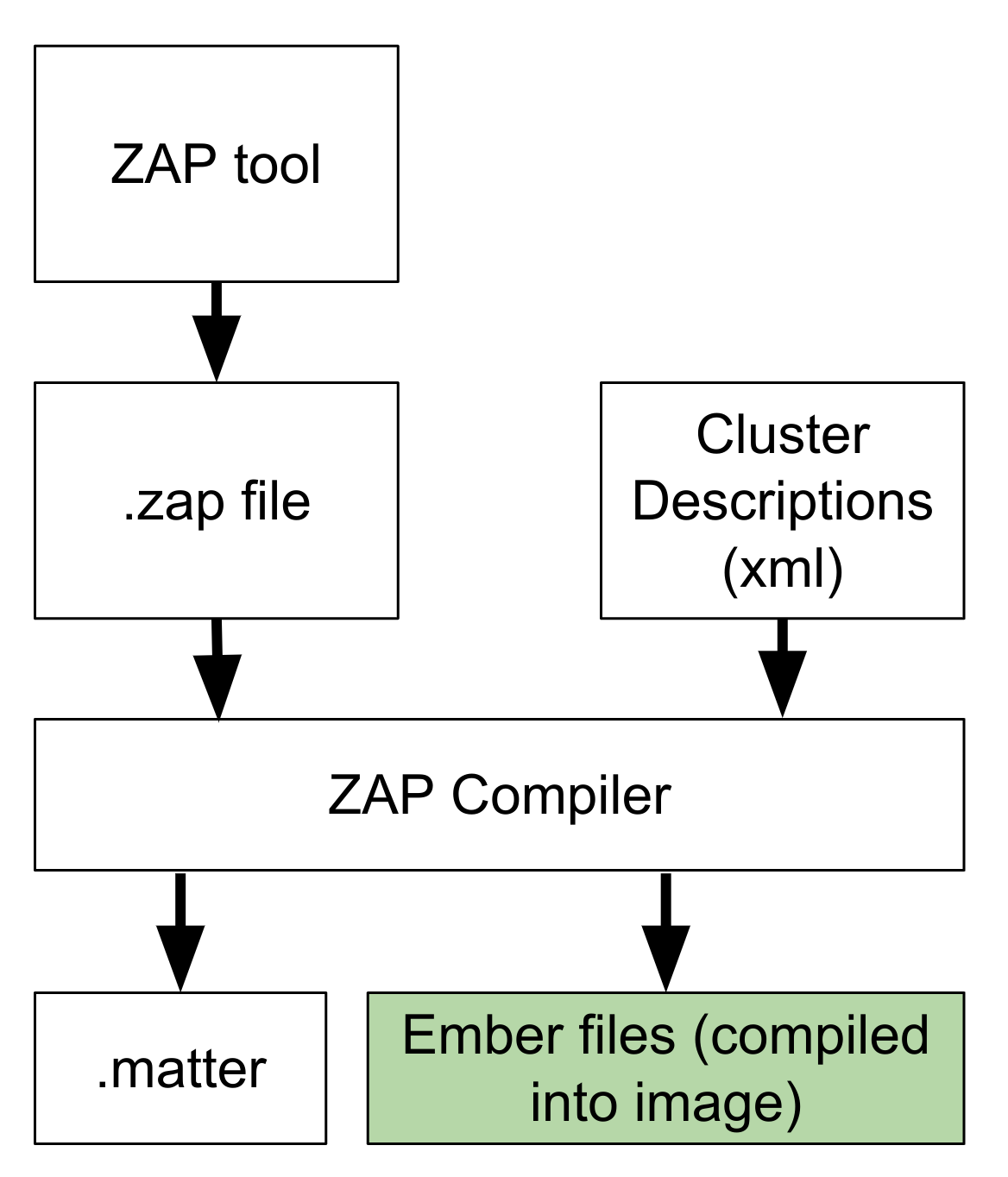
A quick tour#
Run ./scripts/tools/zap/run_zaptool.sh <filename> to open a file in zap. Select the Matter format.
The left hand side shows the endpoint configuration.
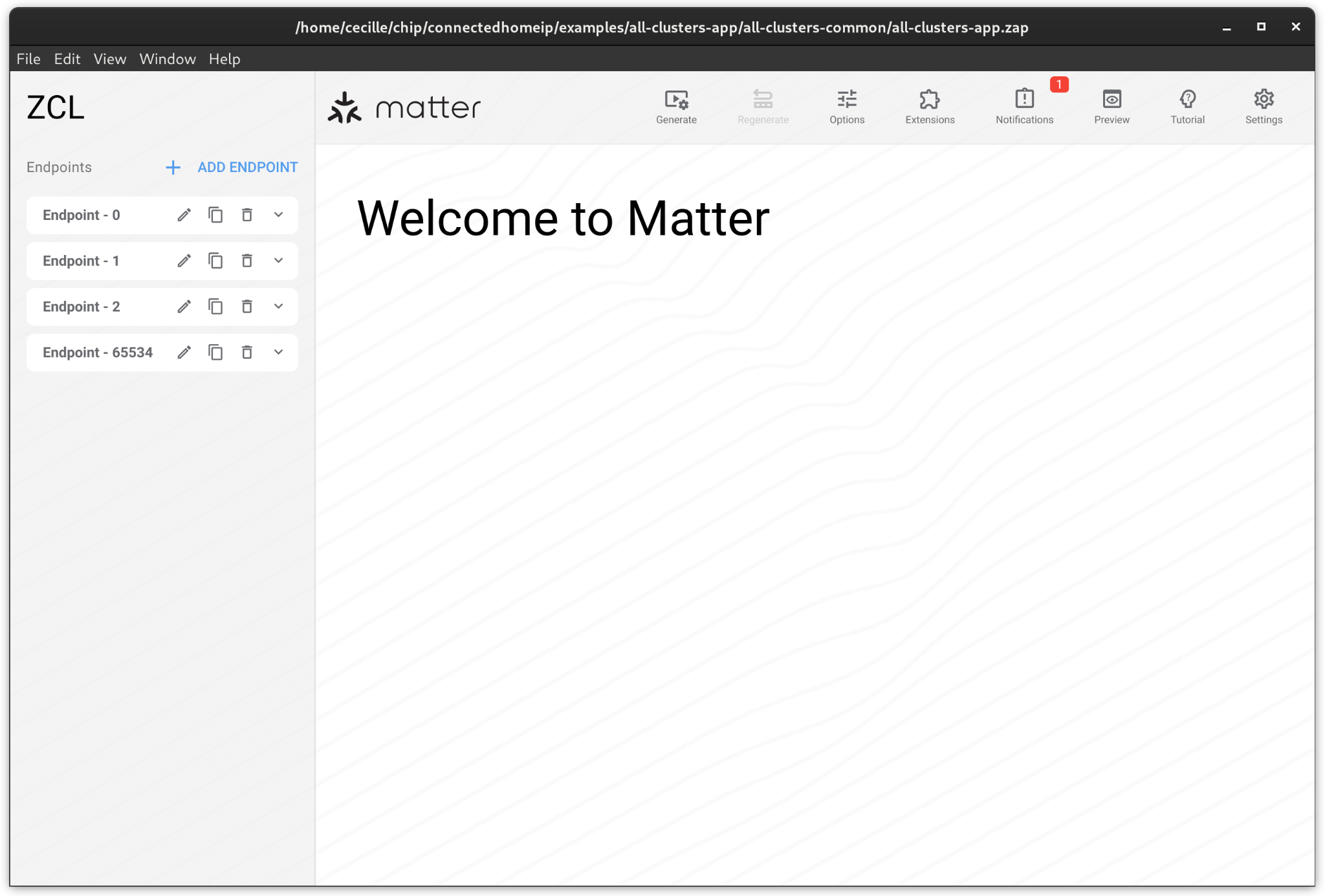
Select the edit button (pencil) on an endpoint to edit it.
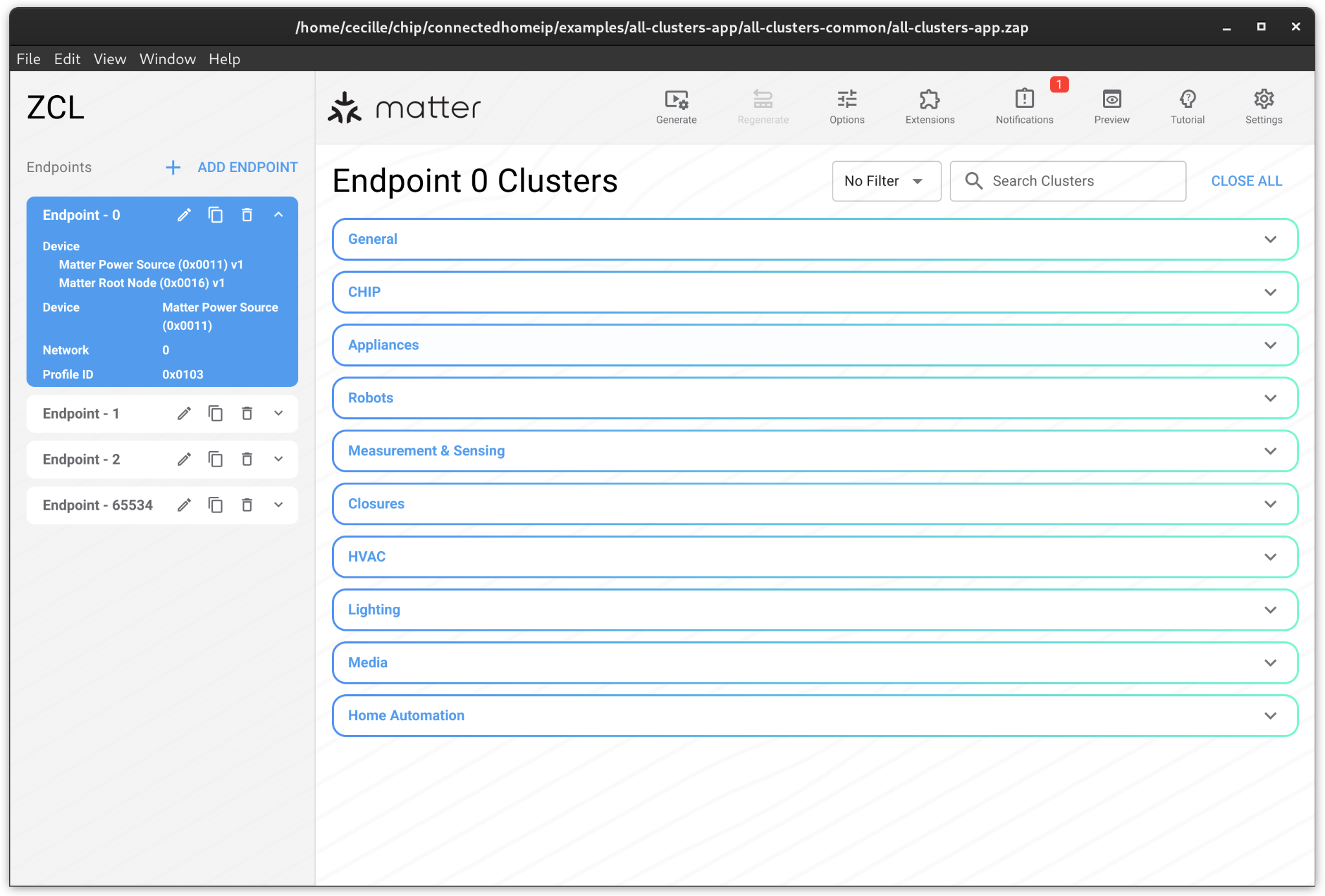
This will open a dialog where you can edit the device types and revisions of your endpoint. Do not edit the profile ID or network. The profile ID identifies the zap endpoint as being a matter endpoint, network is a property that only applies to zigbee products.
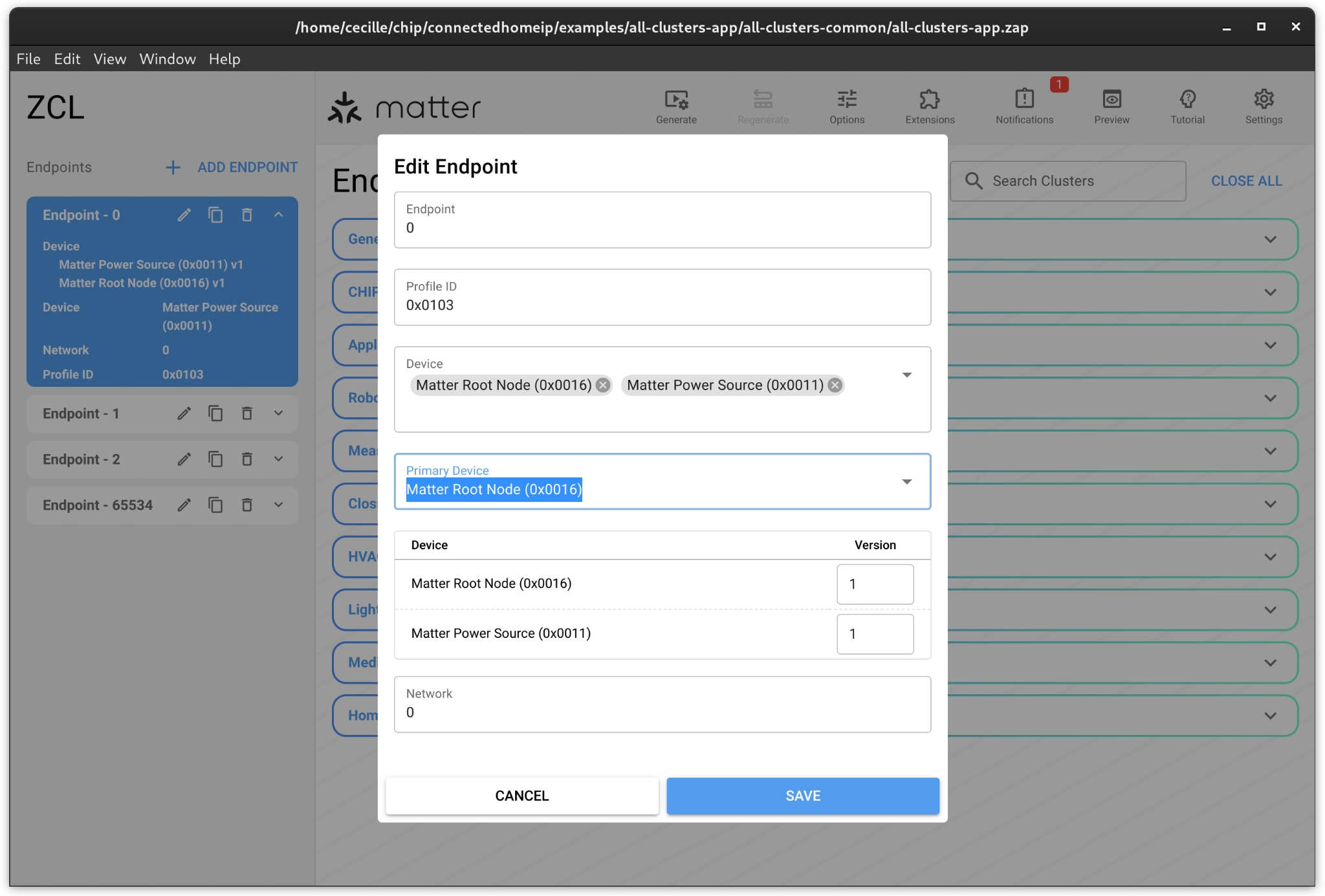
To edit the clusters on an endpoint, select the endpoint. To enable a cluster on an endpoint, set the “enable” drop down to “server” and click the gear to edit the cluster
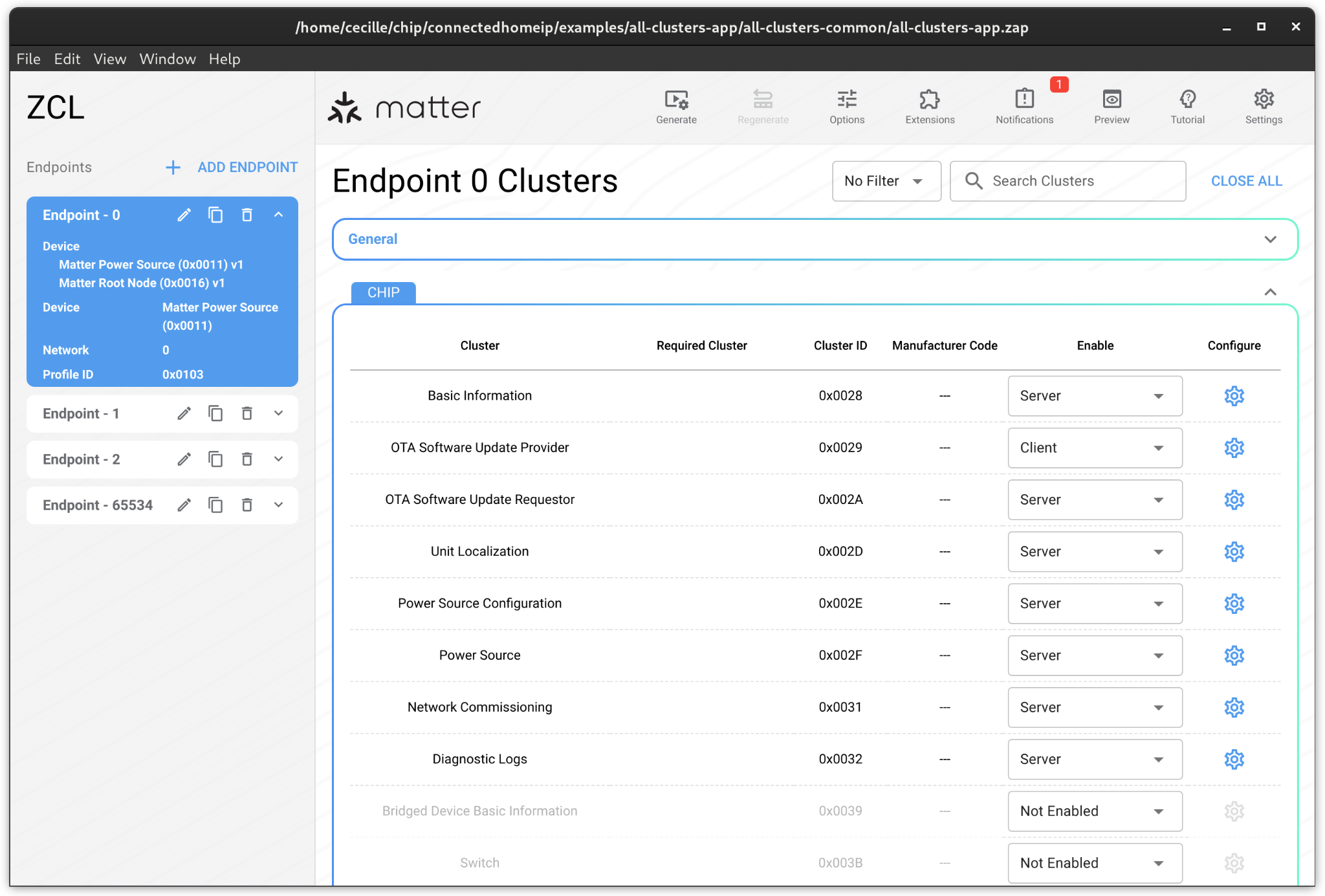
Cluster setup#
Attributes#
The zap file will list all the available attributes in the cluster. The column settings are as follows:
Enabled - turn this on to enable the attribute on the device.
Attribute ID - Attribute ID of the attribute from the spec
Attribute - Attribute name from the spec
Required - This is set to yes if the attribute is mandatory. Note that some attributes become mandatory when features or other attributes are enabled. This will NOT be reflected in the UI. It is up to the device manufacture to ensure the device is conformant with the specification. Conformance can be checked using the conformance checker test TC_DeviceConformance.py
Client/Server - For Matter, all attributes will be server
Mfg code - applies only to manufacturer specific attributes
Storage option - determines whether ember allocates storage for the attribute. The correct value for this field is determined by the cluster implementation. Clusters that use the ember layer directly will be RAM, clusters that use the override layer and implement their own storage are external. Files in the Matter SDK will set these values as appropriate based on the the cluster implementations and as described in the Matter zap config document. It is best to leave these values as-is unless you have a specific reason to override them.
Type - type from the spec
Default - this is different than the “default” set in the spec, and represents the desired starting value for an attribute IF it is implemented in the ember layer (RAM storage)
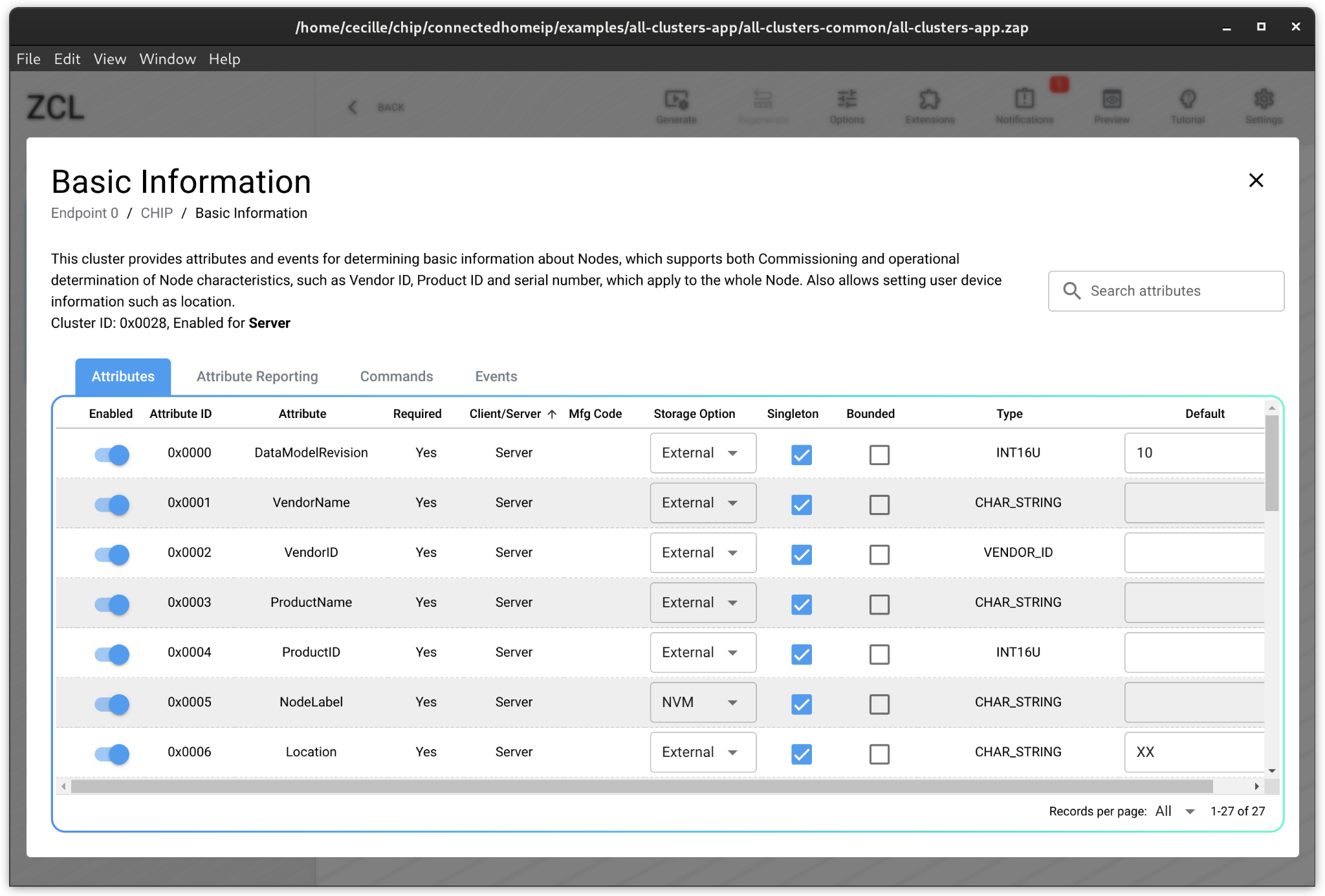
Attribute Reporting#
This does not apply to Matter and is unused.
Commands#
Check off the commands you wish to support. Response commands are required if
the corresponding Request command is supported. 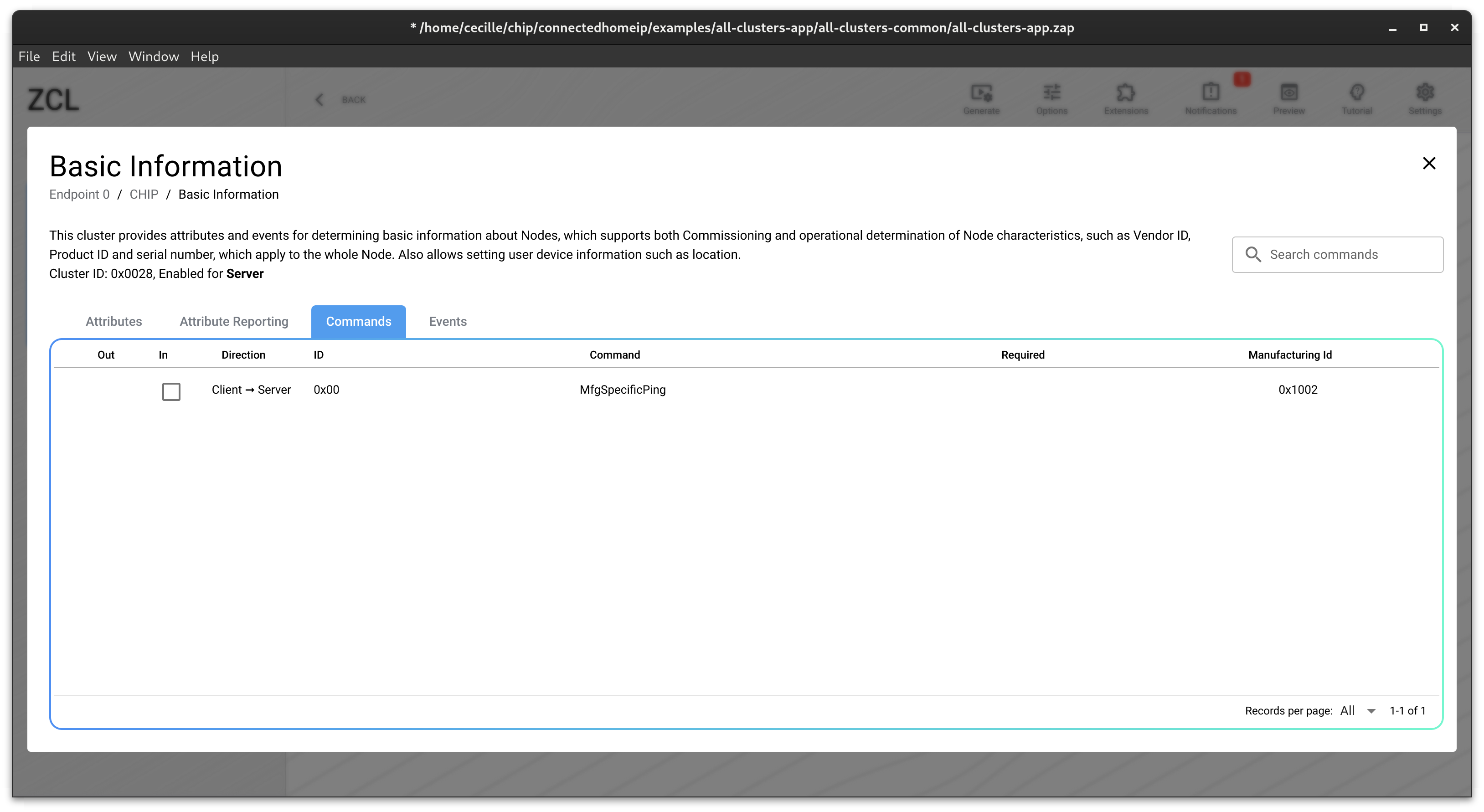
Events#
This does not apply to Matter and is unused.
